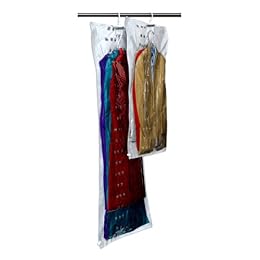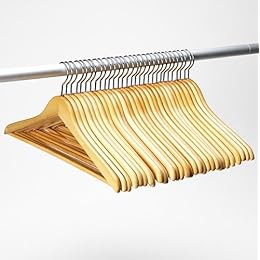
If a drug cartel can set up a savings program, anyone can
I Developed Savings
Photo credt: Justice.gov
I’ve been a university student longer than I’ve been anything else, other than human and female. All told, I’ve been in school, on and off, for 14 years, 11 of which were spent as a full time student. I’ve racked up student debt and I’m now in the process of paying that odd while I remain a student. Pretty snazzy huh? How am I doing it?
Well, first, once I entered my doctorate, I stopped taking out loans. A students should never enter a doctoral program that is not willing to pay something for them to be there in the first place. That was my first smart move. I made sure that the program I entered offered me something. Granted, my program didn’t pay me very much and I have had to take up teaching to pay the bills – but I am not gaining debt while I’m in school. That is very, very important.
I still have a hefty debt load from my undergraduate degree. One of these loans is a government loan that cannot be paid down while I am in school. The other is a student line of credit. I am paying them down and building wealth at the same time. How? Well, my method may not be for everybody. It’s a mix of advice for several big financial gurus. It may not be the method for you, so I’m not universally recommending it. I’m not a certified financial advisor and have no credentials in the area of money management. I’m just giving you the D.L. on why debt load is no longer burning a hole in my stomach.
There are 3 large components to my strategy. They are as follows:
a) Develop Savings - Pay Yourself First
b) Be Aggressive – Track, Evade and Slaughter Debt
c) Invest Directly
I’ll only discuss the first of these components today.
Having money is a savings account is so important in easing my worries about debt. One of the worst feelings I’ve ever experienced is one of helplessness when I was faced with large, sudden charges for health care or tax repayment and had no money in my account but rent.
Money can be saved in a savings account with the goal of using it for emergencies, aggressive payments towards debt or investment. Without liquid savings of some kind, there is very little I could do with my own means to support myself when unexpected bills or cash losses happened. How does one establish savings when one has little income? Well, this might not be the best method for everyone and I’m not certified in personal finance, but this is how I did it.
I Paid Myself
I earn a pittance as a graduate student. I formerly held the opinion that I should direct all my spare money towards debt and save later. When I looked at that logic closely in light of my consumer debt, it seemed ridiculous. My credit card has an interest rate of 18.6%. Unless I was capable of making aggressive payments towards the principle, I would be constantly spooning out an ocean of interest with no assets to show for my time.

That’s when I adopted a practice recommended by David Chilton, the author of the Wealthy Barber - that is, set aside 10% of my income for liquid savings and do not touch it. That might seem like a lot if you can’t pay your phone bill, but I did this even lean times. The way I see it, I’ve earned, approximately 400 000 to date – excluding gifts, union repayments and possibly a few jobs I don’t recall. That doesn’t seem like much for a life time of working, but had I saved 10% of that, I’d have 40 000 in the bank right now.10% is so small, that even when paying the bills seems hard most people do not notice the money. Every paycheque, I set 10% of my net income aside and do not touch it.
I Paid Myself Unexpected Money
The savings have accumulated really quickly, despite my student status. I’ve saved roughly 10K in two years and have barely suffered doing it. I’m not earning 50K a year, so you might ask how I did managed to save that money. Along with paying myself 10%, I also put any unexpected funds into my savings account.
Unexpected funds are cheques from grandma, income tax repayments, money saved by buying something on sale, money earned in past time activities or through sale of personal items. I defined it as money that falls outside of regular income or savings made by not purchasing something full price. When my parents give me a cheque for my birthday, I have a choice to spend it or save it. I decided to put this money in savings the day I looked at one of my checkings account statements and realized that all of those purchases were for temporary items, usually clothing or restaurant dining, that I would not miss if they disappeared or if I never had them. Rather than spend this money on something dispensable, I put it aside. I even threw in money refunded from purchases that could not be directly refunded back to the paying account
Outside Work just for me
To help build my savings I decided to earn a little bit of money from work outside of my regular graduate student jobs. As my research schedule is very demanding, the work I chose could not have high time demands. Waitress and bartending work would have required more time than I could spend. The work also had to be enjoyable as it would occupy some of my very infrequent spare time. In the end, I chose worked several, short term, outside jobs. I searched www.craigslist.org for art school modeling work (they look for people of all shapes and sizes), and basic book research work. Both of these positions were fun and had agreeable schedules. The funds from that work, while small, were also put into my savings.
I Celebrated Every Savings…
…..in a money healthy way. It was really easy for me to save money when I had fun doing it. Even when I have $50 in my checkings account the last few days before my paycheque, I always found a way to celebrate the $75 I put into savings when that paycheque arrived. Sometimes that meant I bought a café latte, sometimes that meant I went into my research area late. Other times, it meant that I just took joy in watching the numbers in my savings account increase.
I Never Compared Myself to My Contemporaries
Graduate work is a tough road. Not a lot of people understand why I pursued it and it can be tough to stick to my research while I’m watching my college friends buy houses and have babies. It can be very depressing to look at my accounts and start accounting for the assets my contemporaries have. ……so I don’t do it. I don’t think about what other people have or wonder if I’m financially behind everyone else. It’s self-defeatist. I just take joy in the idea that I’m doing something for me.





 >
>




















